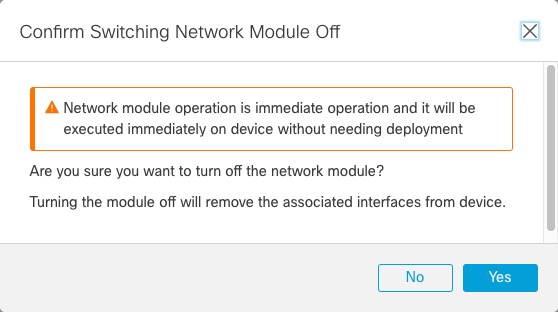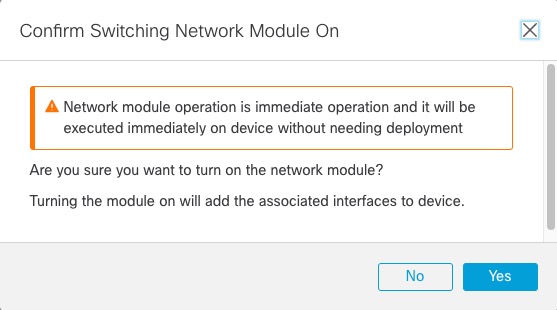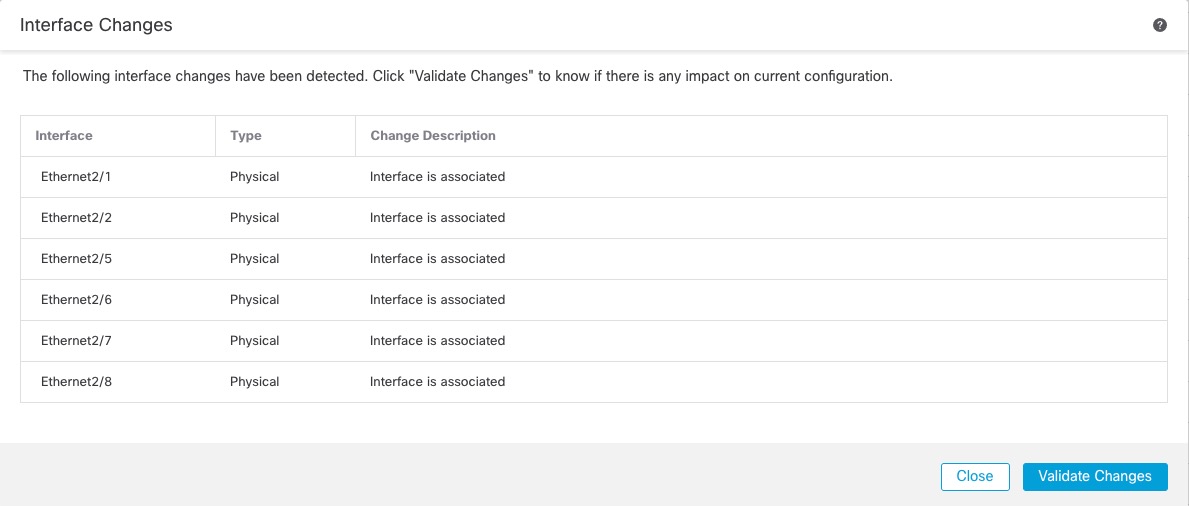Replace the Network Module with a Different Type
If you replace a network module with a different type, then a reboot is required. If the new module has fewer interfaces than the old module, you will have to manually remove any configuration related to interfaces that will no longer be present.
For clustering or High Availability, you can only perform chassis operations on the control node/active unit.
Before you begin
For High Availability, you cannot disable a network module if the failover link is on the module. You will have to break High Availability (see Break a High Availability Pair), which means you will have downtime when you reboot the active unit. After the units finish rebooting, you can reform High Availability.
Procedure
Step 1 | For clustering or High Availability, perform the following steps.
|
Step 2 | From , click Manage in the Chassis column. For clustering or High Availability, this option is only available for the control node/active unit; network module changes are replicated to all nodes. 
The Chassis Operations page opens for the device. This page shows physical interface details for the device. |
Step 3 | On the interfaces graphic, click the slider ( 
Do not save any changes on the Interfaces page. Because you are replacing the network module, you do not want to disrupt any existing configuration. |
Step 4 | You are prompted to confirm that you want to turn the network module off. Click Yes. 
|
Step 5 | On the device, remove the old network module and replace it with the new network module according to the hardware installation guide. |
Step 6 | Reboot the firewall; see Shut Down or Restart the Device. For clustering or High Availability, reboot the data nodes/standby unit first, and wait for them to come back up. Then you can change the control node or active unit (see Switch the Active Peer in the Firewall Threat Defense High Availability Pair), and reboot the former control node/active unit. |
Step 7 | In the Firewall Management Center, click Sync Modules to update the page with the new network module details. |
Step 8 | Enable the new module by clicking the slider ( 
|
Step 9 | You are prompted to confirm that you want to turn the network module on. Click Yes. 
|
Step 10 | Click the link in the message at the top of the screen to go to the Interfaces page to save the interface changes. 
|
Step 11 | If the network module has fewer interfaces: |
Step 12 | To change the interface speed, see Enable the Physical Interface and Configure Ethernet Settings. The default speed is set to Detect SFP, which detects the correct speed from the SFP installed. You only need to fix the speed if you manually set the speed to a particular value and you now need a new speed. |
Step 13 | Click Save to save the interface changes to the firewall. |
Step 14 | If you had to change any configuration, go to and deploy the policy. You do not need to deploy just to save the network module changes. |
Step 15 | For clustering or High Availability, perform the following steps.
|



